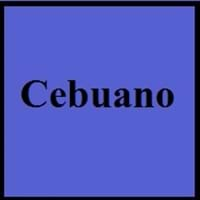Cebuano and Navajo
Countries
Philippines
United States of America
National Language
Philippines
United States of America
Second Language
Philippines
Not spoken in any of the countries
Speaking Continents
Asia
North America
Minority Language
Not spoken in any of the countries
Not spoken in any of the countries
Regulated By
Visayan Academy of Arts and Letters
Not Available
Interesting Facts
- About one-fifth of the population of the philippines speak cebuano and are second largest ethnolinguistic group in the country.
- Cebuano contains many words of Spanish origin.
- Navajo language is tonal language, as it heavily relies on pitch to distinguish between similar words.
- Navajo ethinc group is 2nd largest Native American group.
Similar To
Hiligaynon Language
Apache Language
Derived From
Island of Cebu
Not Available
Alphabets in
Cebuano-Alphabets.jpg#200
Navajo-Alphabets.jpg#200
Writing Direction
Not Available
Not Available
Thank You
Salamat
Ahéhee'
How Are You?
Kumusta man ka?
Ąąʼ haʼíí baa naniná?
Good Night
Maayong Gabii
Yá'át'ééh hiiłchi'į'
Good Evening
Maayong Gabii
Yá'át'ééh ałní'íní
Good Afternoon
Maayong Hapon
Yá'át'ééh
Good Morning
Maayong Buntag
Yá'át'ééh abíní
Please
Palihug
T'aa shoodi
Sorry
Ikasubo ko
Not available
I Love You
Gihigugma ko ikaw
Ayóó ánííníshí
Excuse Me
Ekskyus mi
Shoohá
Dialect 1
Boholano
Navajo1
Where They Speak
Bohol
Arizona
Dialect 2
Southern Kana
Navajo2
Where They Speak
southern Leyte
New Mexico
Dialect 3
North Kana
Navajo3
Where They Speak
northern part of Leyte
Utah
How Many People Speak?
Not Available
Speaking Population
Not Available
Second Language Speakers
Not Available
Native Name
Visayan
Diné Bizaad / Dinék'ehjí
Alternative Names
Binisaya, Bisayan, Sebuano, Sugbuanon, Sugbuhanon, Visayan
Navaho
French Name
cebuano
navaho
German Name
Cebuano
Navajo-Sprache
Pronunciation
Not Available
Not Available
Ethnicity
Cebuano people
Navajo people
Origin
16th century
1500 CE
Language Family
Austronesian Family
Dené–Yeniseian Family
Subgroup
Not Available
Athapascan
Branch
Not Available
Not Available
Early Forms
No early forms
No early forms
Standard Forms
Standard Cebuano
Navajo
Language Position
Not Available
Signed Forms
Not Available
Navajo Sign Language
Scope
Individual
Individual
ISO 639 1
No data Available
nv
ISO 639 6
Not Available
Not Available
Glottocode
cebu1242
nava1243
Linguasphere
No data Available
No data available
Language Type
Living
Living
Language Linguistic Typology
Verb-Subject-Object
Subject-Object-Verb
Language Morphological Typology
Not Available
Fusional, Polysynthetic, Synthetic
All Cebuano and Navajo Dialects
Most languages have dialects where each dialect differ from other dialect with respect to grammar and vocabulary. Here you will get to know all Cebuano and Navajo dialects. Various dialects of Cebuano and Navajo language differ in their pronunciations and words. Dialects of Cebuano are spoken in different Cebuano Speaking Countries whereas Navajo Dialects are spoken in different Navajo speaking countries. Also the number of people speaking Cebuano vs Navajo Dialects varies from few thousands to many millions. Some of the Cebuano dialects include: Boholano, Southern Kana. Navajo dialects include: Navajo1 , Navajo2. Also learn about dialects in South American Languages and North American Languages.
Cebuano and Navajo Speaking population
Cebuano and Navajo speaking population is one of the factors based on which Cebuano and Navajo languages can be compared. The total count of Cebuano and Navajo Speaking population in percentage is also given. The percentage of people speaking Cebuano language is 0.32 % whereas the percentage of people speaking Navajo language is Not Available. When we compare the speaking population of any two languages we get to know which of two languages is more popular. Find more details about how many people speak Cebuano and Navajo on Cebuano vs Navajo where you will get native speakers, speaking population in percentage and native names.
Cebuano and Navajo Language Codes
Cebuano and Navajo language codes are used in those applications where using language names are tedious. Cebuano and Navajo Language Codes include all the international language codes, glottocodes and linguasphere.





